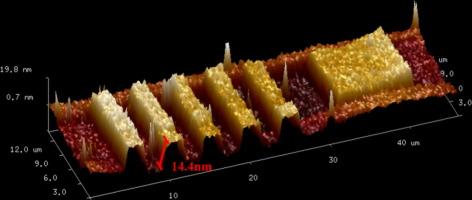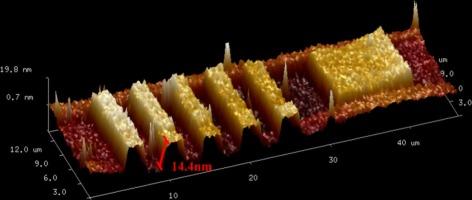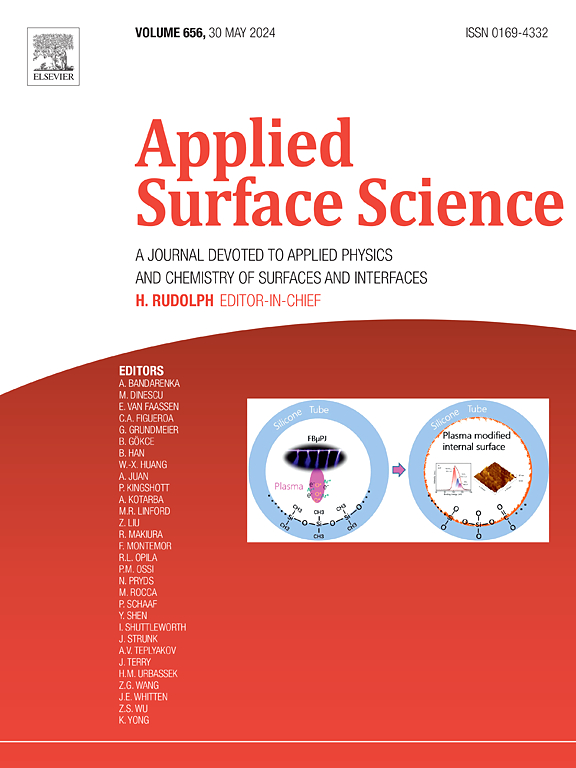锌基混合薄膜作为光刻胶的分子层沉积研究
IF 6.3
2区 材料科学
Q2 CHEMISTRY, PHYSICAL
引用次数: 0
摘要
金属氧化物和有机杂化薄膜的分子层沉积(MLD)在纳米级厚度控制上具有极佳的均匀性,因此在极紫外光阻剂中具有巨大的应用潜力。Zn 具有较大的光电子效应截面,会产生大量的次级电子,这些次级电子会破坏有机键,从而在紫外线(UV)照射下导致溶解度发生变化。在这项研究中,Zn 基 MLD 薄膜被证明具有用作极紫外(EUV)光刻胶的潜力。根据 X 射线光电子能谱(XPS)分析提出了紫外线照射机制。本文章由计算机程序翻译,如有差异,请以英文原文为准。


Study of molecular layer deposition of zinc-based hybrid film as photoresist
Molecular layer deposition (MLD) of metal oxide and organic hybrid thin films has great potential to be utilized in extreme ultraviolet photoresist, thanks to its excellent uniformity on the nanometer scale thickness control. Zn has large photoelectron effect cross-section, resulting in lots of secondary electrons, which can break the organic bonds, causing changes in solubility upon the ultraviolet (UV) light exposure. In this work, Zn-based MLD thin films have been demonstrated for their potential to be used as photoresist for extreme ultraviolet (EUV) application. UV light exposure mechanisms have been proposed based on X-ray photoelectron spectroscopy (XPS) analysis.
求助全文
通过发布文献求助,成功后即可免费获取论文全文。
去求助
来源期刊

Applied Surface Science
工程技术-材料科学:膜
CiteScore
12.50
自引率
7.50%
发文量
3393
审稿时长
67 days
期刊介绍:
Applied Surface Science covers topics contributing to a better understanding of surfaces, interfaces, nanostructures and their applications. The journal is concerned with scientific research on the atomic and molecular level of material properties determined with specific surface analytical techniques and/or computational methods, as well as the processing of such structures.
 求助内容:
求助内容: 应助结果提醒方式:
应助结果提醒方式:


